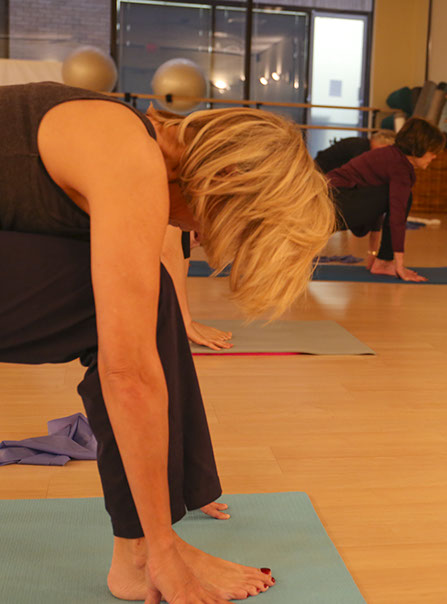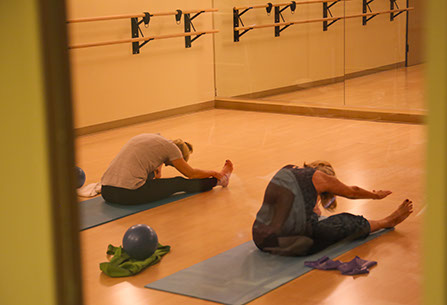
Yoga



The Workout:
Hatha yoga – the type of yoga taught at our studio, is the American and European adaptation of the Indian-originated system of calisthenic exercises and breathing practices.
- Uses bodyweight, leverage, and isometric muscle exercises to achieve balanced strength and safe flexibility
- Internally-focused awareness on sensations and the rhythm of the breath, the inner part of yoga, helps the practitioner build a mental state of concentration and calm
The Physical Benefits:
- Supports proper alignment of the spine
- Teaches to intentionally strengthen and coordinate core muscles
- Has immense therapeutic benefits for scoliosis and lower back pain
- Remarkable flexibility because daily practice creates balanced strength across joints as it simultaneously reshapes and breaks down old fascia.
The Mental Benefits:
- Cultivates a state of alertness and calmness.
- Use of meditation practices, which serve to increase self-awareness and self-regulation.
Styles of Yoga:
- Hatha Yoga – Generally describing physical posture practice (“yoga asana”) as well as breathing and meditation practices
- Iyengar Yoga – A specialization of Hatha Yoga for therapeutic purposes; developed and taught by B.K.S. Iyengar
- Ashtanga Yoga – A specialization of Hatha Yoga focusing on athleticism and flexibility; developed and taught by K. Pattabhi Jois
- Hot Yoga – In the 1970’s, Indian national Bikram Choudhury began teaching an adaptation of Hatha Yoga, now popularly called “Hot Yoga”, in which a proscribed set of postures are performed in an intensely heated room.
Recent American innovations and adaptations of these Indian styles are:
- Power Yoga (Flow Yoga) – Yoga postures combined with aerobic exercise; focused primarily on fitness; developed in the 1990’s and taught by Doug Swenson, Baron Baptiste, and Bryan Kest
- Jivamukti Yoga – A variation of Power Yoga incorporating devotional practices; developed in 1984 by David Life and Sharon Gannon
- Forrest Yoga – A therapeutic style of yoga developed and taught by Ana Forrest
Safety
A novice yoga student working with bodyweight and leverage is more likely be safe than a novice in strength training who may overload their muscles and joints with excessive weight in a squat or bench press.
At least one therapeutic yoga class a week is an important investment in longevity for anyone, regardless of whether you go to five, three, or just one yoga class(es) a week.
Awareness of one’s own body, whether in a yoga class or out of it, is one of the best ways to prevent an injury, or continue to be active and careful after an injury has occurred.
About | Contact | Schedule | Certifications | Blog
5757 Woodway, Suite 150
Houston, TX 77057
713.784.8555 | info@thegoodspace.com
Copyright © 2017 thegoodspace.com | All Rights Reserved